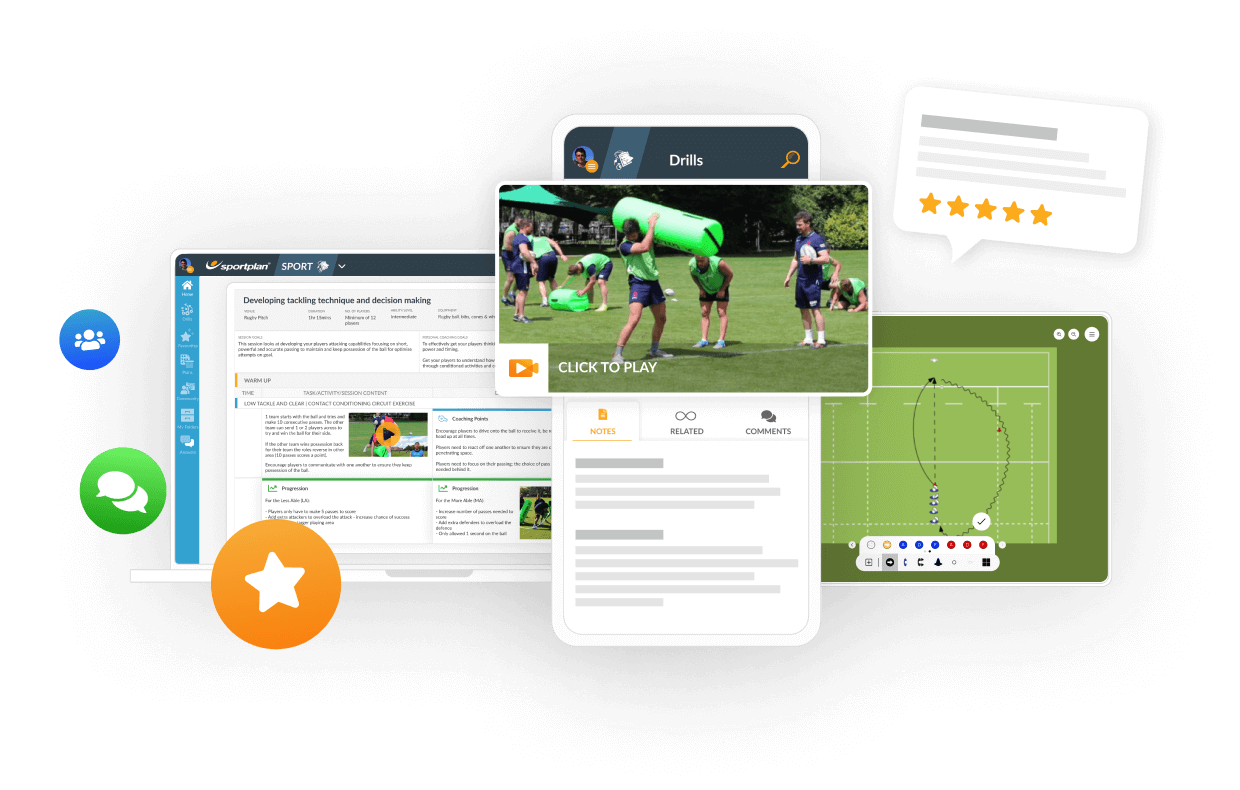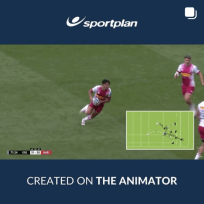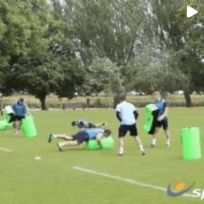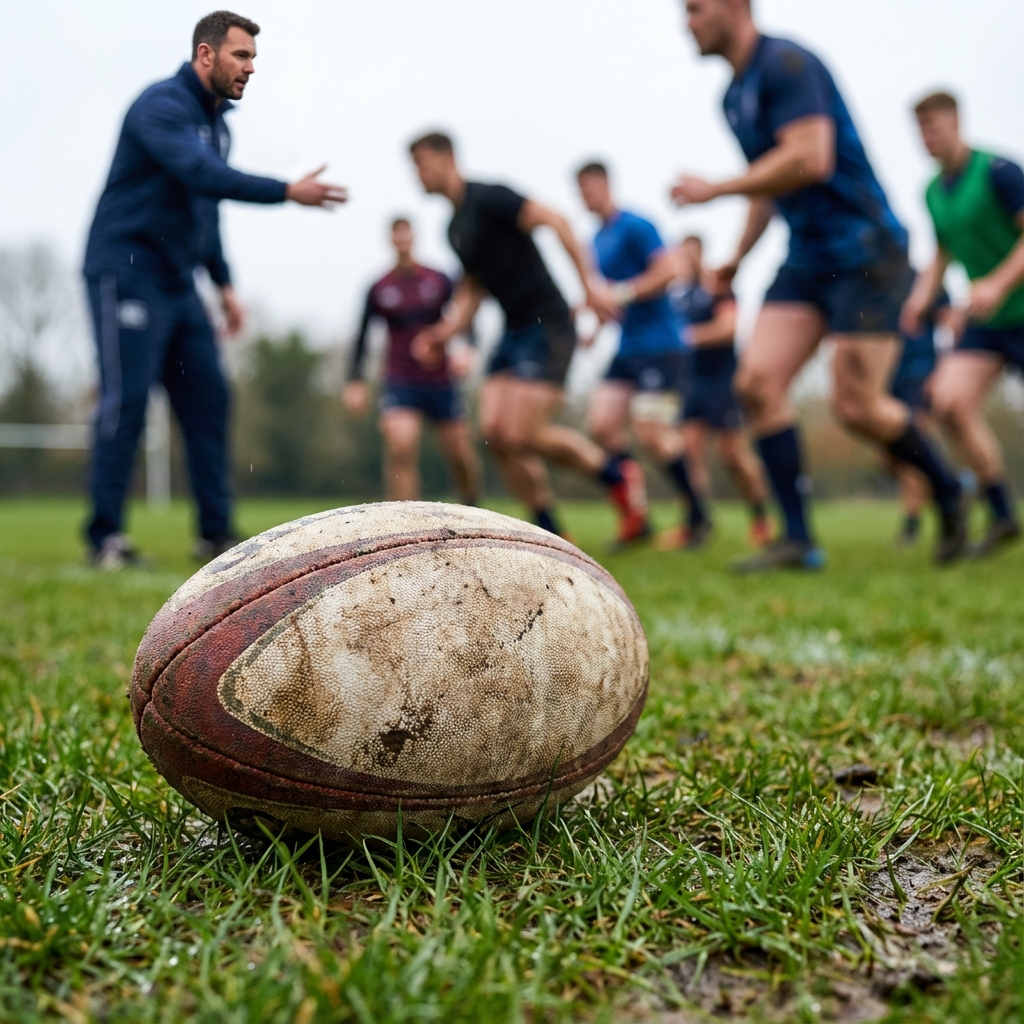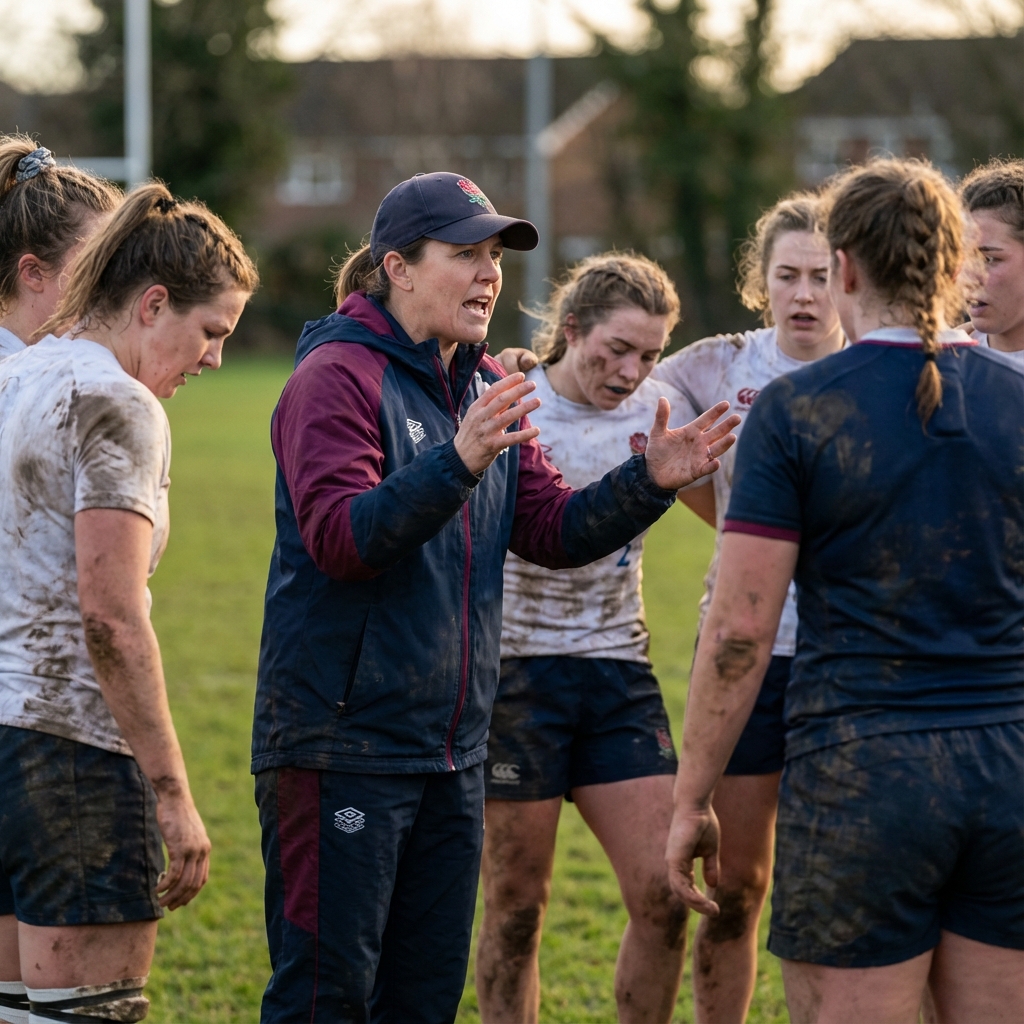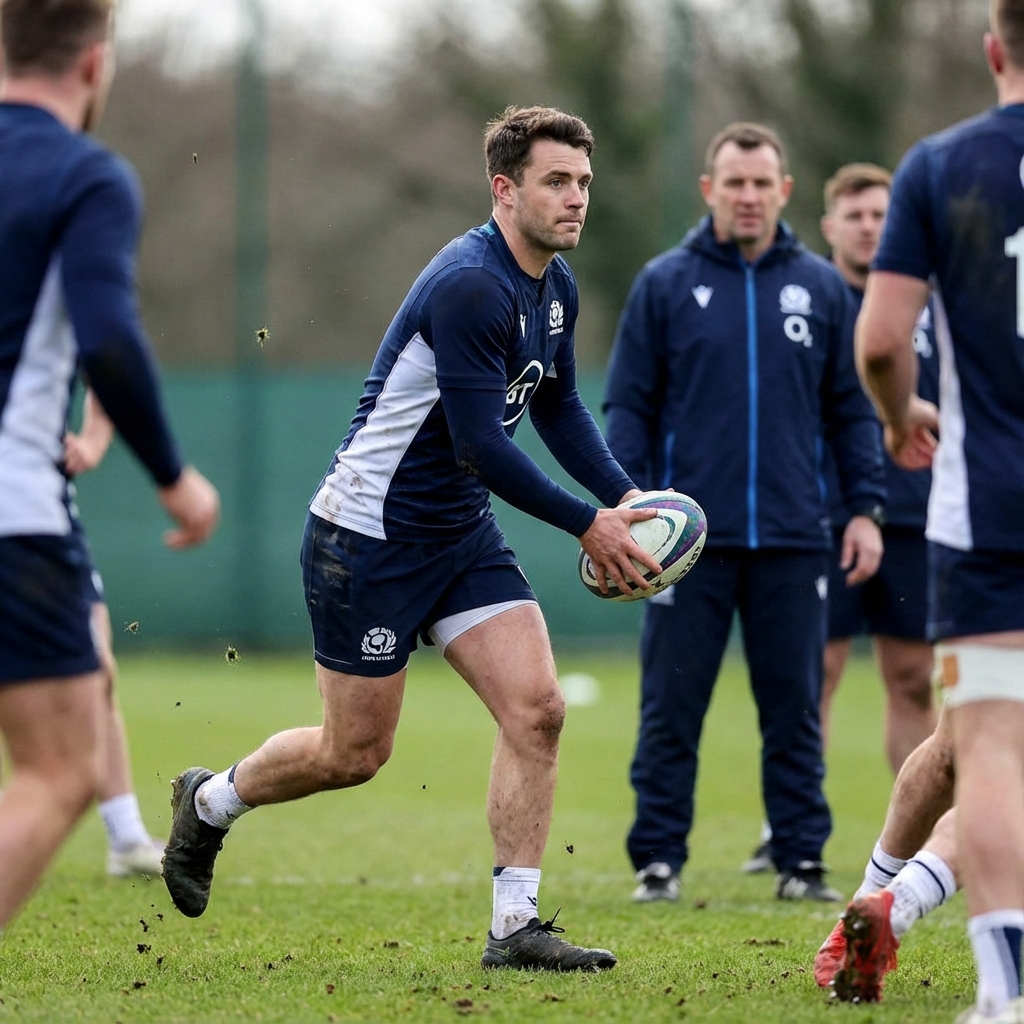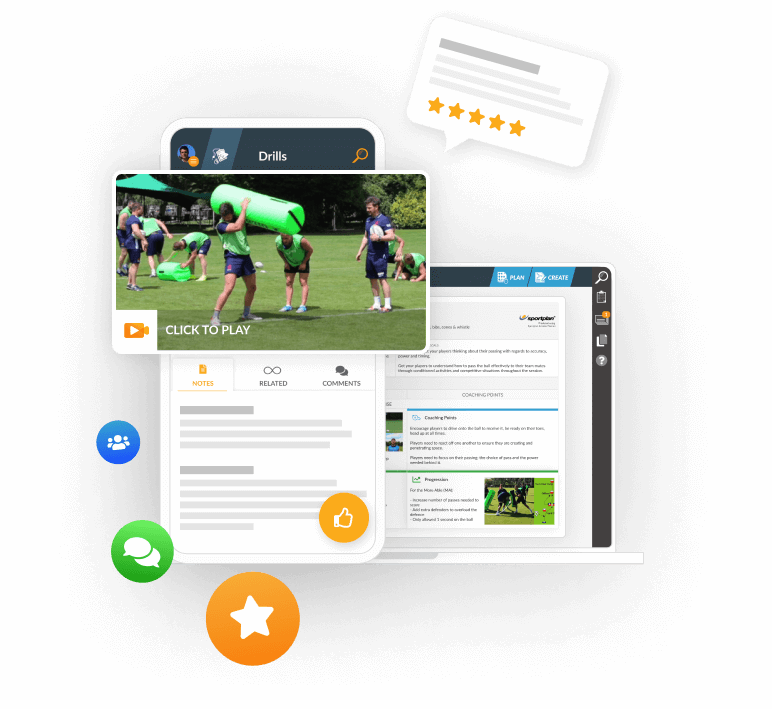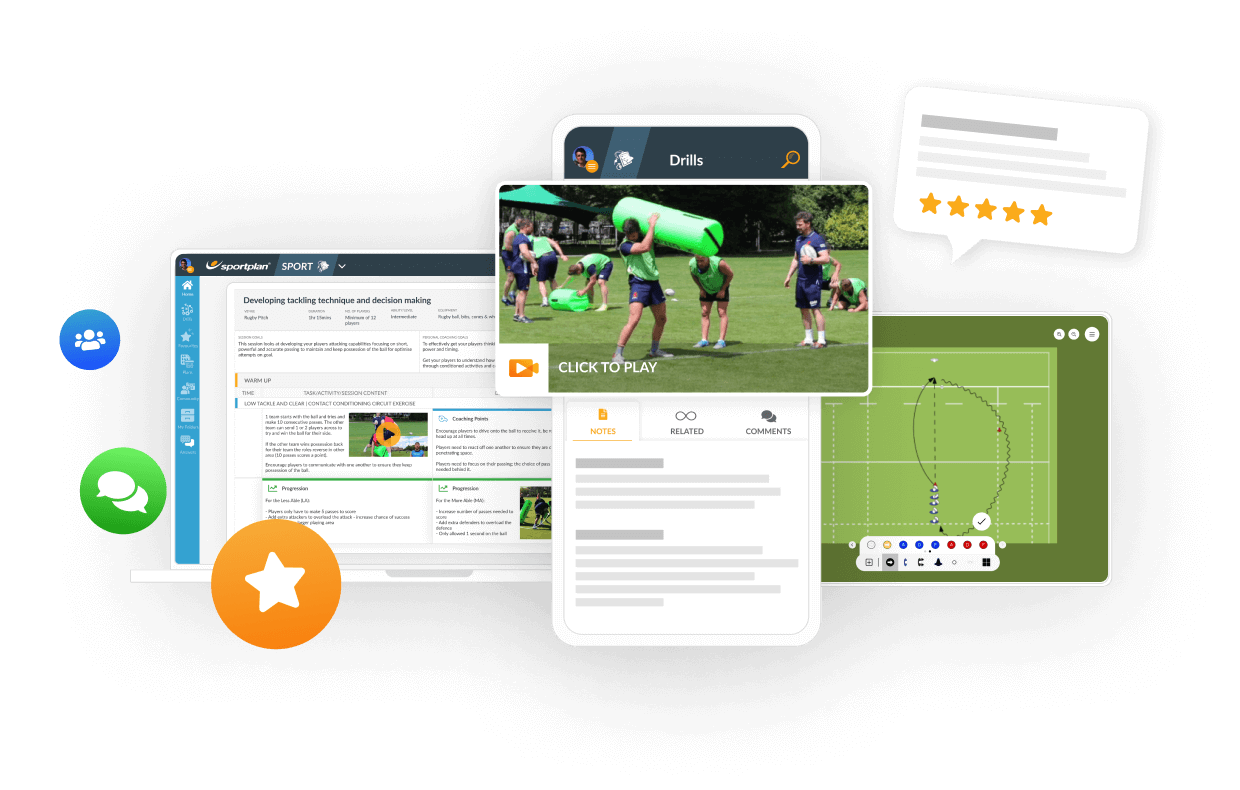Big Hit or Step Up tackle
Describe a 'step-up' or 'big hit' tackle. How would you coach it, what is the technique and what are the key factors technically?
Terrance
First of all, my view is that this tackle is only approriate for senior players and should not be coached for players under the age of 18.
Simply put, we normally coach tacklers to allow the ball carrier to fall over the tackler - in effect using our bodies as a trip to bring the ball carrier down. In the step up tackle, the tackler side steps into the ball carrier and by planting the feet firmly acts as a "wall" and instead of allowing the ball carrier to fall over the tackler instead the ball carrier is smashed back.
The advantage to the defence is that the ball carrier cannot present the ball well and so the opportunity to win back possession is increased for the defence.
Technically it is difficult to coach and requires a lot of commitmment from the tackler. Using one to one tackling drills across a small grid would be a good way to coach this and I would advise using body shields to start with.
I hope this helps you.
Simon
G'day, Terrence
The "bell-ringer" tackle often requires a 45 degree angle. For example, the ball-carrier, upon getting to the defence, attempts to step around the defender by running a bit sideways. This might mean that the ball-carrier's front foot is angled away from the tackler. Therefore, his hips and centre of gravity (and most of his bodyweight) will be angled away from the tackler.
If the tackler has got a lower bodyheight (knees bent)and his lead foot (and corresponding shoulder) close to the ball-carrier, when he hits the ball-carrier, his force will knock the ball-carrier back and to the side. A bit like a car crash where the straight travelling vehicle is hit from an angle (try it with a couple of toy cars, if you like).
Maybe teach your tacklers to arc in from their ball-carrier's inside shoulder in practice so it is the tackler creating that crucial angle (also makes the side-on low tackle a bit easier to perform).
To avoid this type of hit, perhaps teach your ball-carriers to "power step" towards contact. A few thoughts anyway.
Cheers Dave Robbo
Hi Terry, I was coached by rugby league player (now coach) Terry Matterson when union was first bringing league-style 'up and drift' defence. He was a big advocate of approaching tackling like a punch - get close and low, set your feet with the opposite foot of your 'hit' shoulder forward (i.e. right shoulder tackle = left foot forward) which means that your core is steady, and explode into the hit from your legs forward (obviously then hitting with your shoulder). Work hard then to grip round the player and keep on your feet to drive the legs. Hope this helps!
I think you will get a 1000 versions of how to take on the 'front aggressive tackle' (as opposed to a front passive tackle - fall back option).
For me I like to coach getting the leading leg as close to the tackler as possible, ideally splitting his/her legs, shoulder hit (like plane taking-off) and using the leading leg to drive up and through tackle.
Opposing leg / shoulder makes a triangle between should / leg and ball carrier and can only be static - not driving through target, hence leading leg and shoulder.
Personally I call it the chainsaw tackle, as leading leg & shoulder hit allows for opposite arm/hand to grab a leg and rip up as if starting a chainsaw... good luck!







